
…and add difficult sources to your referencing software like a pro
Librarians have a gift. They can take one look at a source and know exactly what it is and which details they need to add it to the library catalog.
We’re letting you in on a secret: librarians are not born with this skill. At some point, they learned how to identify and describe sources.
Why is that important? When you add references to your reference management information software you’re essentially cataloguing your sources. That means that you, too, can learn how to deal with difficult or unusual source types.
In an earlier blog post, we explained what you can do when you have no idea what reference type you have in front of you.
In this current blog post we explain the best way to add difficult reference types to your reference management program using Citavi as an example. Just what do we mean by “difficult” or "unusual" reference types? In contrast to “easy” and often used reference types such as journal articles and books, less frequently used reference types often do not have an identifier which you can use to import reference information automatically. These include standards, internal documents, or government publications.
For reference types like these, you will need to carefully add the details to your reference management program by hand. Why’s that? Your citation style can only generate a bibliography correctly if the details of the work are entered in the correct fields.
With these basic rules you can add difficult reference types like a librarian:
- Don’t expect an exact template for every reference type or work
Most reference management programs offer a set of pre-selected reference types. The source types you’ll cite most often, such as journal articles, books, and webpages, will always be available. Sometimes, though, you won’t be able to find a reference type that matches. Although some programs allow you to create custom reference types, you then will also need to make changes to your citation style. In most programs (including Citavi) you need to select the reference type that offers all the necessary fields and is most similar to the work you have. To determine whether a reference type will be a good fit, you can also check your program’s documentation. - Don’t fill out every single field
Your reference management program is not an application form that needs to be filled out in its entirety. Naturally, you can only enter as many details as are actually in your original source. In addition, you may not need all of the information you could potentially add.Many reference management programs are set up so that the most important fields are displayed first. For example, in Citavi you’ll find the most frequently used fields on the main form. Less frequently used fields are hidden under “More fields”. - Not every citation style outputs all information you enter in the bibliography
It can sometimes be confusing when information you enter in your software doesn’t appear in your bibliography, for example, the page count for a book. In these cases, it’s important to remember that the citation style you select determines which information is used in the bibliography. If certain information is important to you, and you’re not required to use a specific citation style, select a different one or make changes to your citation style. In EndNote and Citavi you can do this directly in each program. For programs that use CSL, such as Mendeley or Zotero, you can customize the styles with a special editor. - Include enough information so that the work can be found again later on
When you cite you use sources to support the arguments you make. Your reader should be able to find this source quickly if he or she wants to read or verify the original statement. For this reason, it’s important to make sure you include all the necessary information that will help the reader find the source. For print sources, always check the first and last few pages of the work. Webpages often have a “legal details” link in the footer of the page. There you can find important details, for example, the year the website was published. - Check whether your citation style requires you to enter information in a special way
Some guidelines have special requirements that your reference management program might not be able to implement because the reference type or field is missing. If you want to add an encyclopedia article, for instance, you might find special instructions in the style description. For example, in Citavi, you’ll see the following:
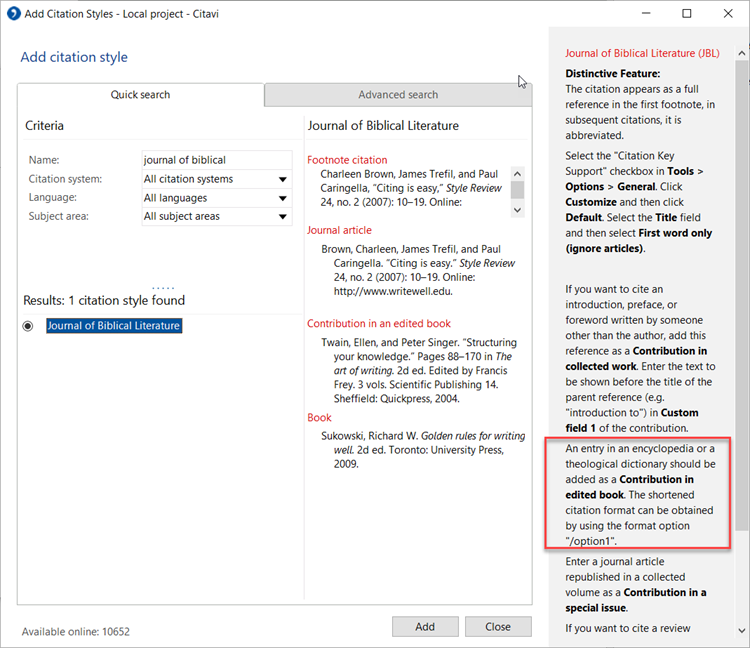
- Check the actual guidelines for your citation style
If you can’t explain why you’re getting certain results in your bibliography, and you’re sure that you entered all the details correctly, check your citation style guidelines. Sometimes the result that you think is incorrect is exactly what the style calls for. - Use custom fields and then add them to your citation style
Can’t find the necessary field for a piece of information about your source? First, try to use other available fields that might work. For example, in Citavi you can use the field “Title supplement” for additional information. If your entry does not appear in the bibliography your style likely hasn’t defined this field. Make changes to your style so that it outputs the field or use a custom field if no other field fits well. Then, add this custom field to your citation style to ensure that its contents are output to your document.
Examples of unusual reference types that you’ll usually need to add by hand
Here you’ll find some often-used difficult reference types, and we’ll show you how you can add them to Citavi. If you use another reference management program, other reference type templates or fields might work better. Always double check the results in your bibliography.
Government documents
How you add a government document to Citavi depends on what reference type matches most closely. For example, the technology assessment below would be added using the "Report or Gray literature" reference type.

Legal reference types such as laws, court decisions, or legal commentaries can be difficult in any reference management program since citation rules often depend on the jurisdiction. You’ll often need to use custom fields and make changes to your citation style.
Internal documents
For internal reports, guidelines, and other documents, you’ll often use the reference type “Report or Gray literature”.
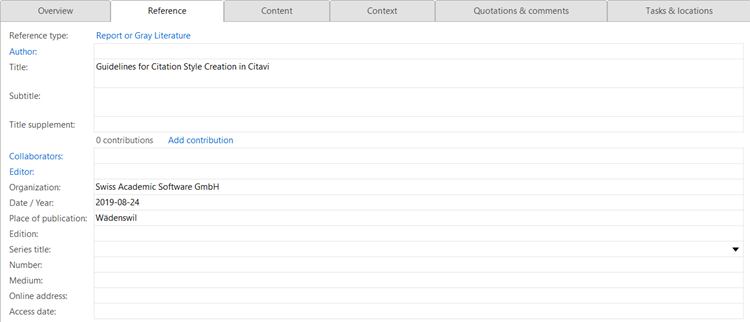
ISO Standards
ISO and other international standards can be added with the “Standard” reference type.
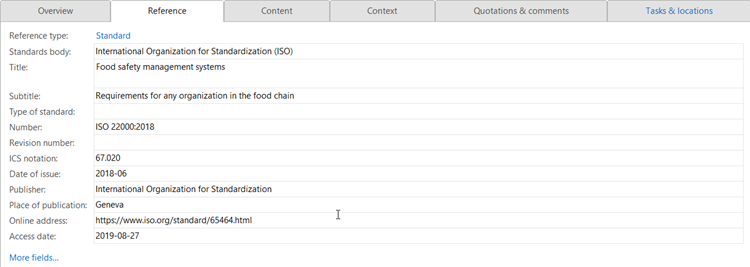
Foreword in a book
In Citavi, a normal book can’t have a contribution. You'll need to add the book as a collected work and then add the foreword as a contribution.
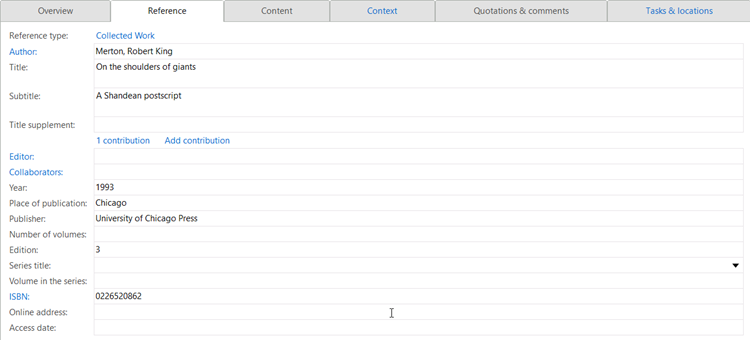
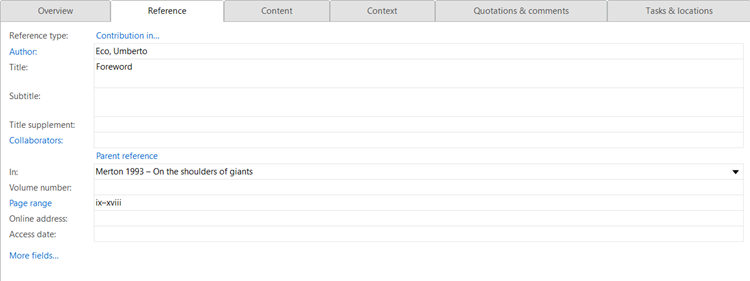
Additional examples for special reference types can be found in the Citavi Manual. With a little bit of practice you’ll soon be able to identify difficult reference types as quickly as a librarian!
Have you ever been uncertain as to how to add a source to your reference management program? How did you add it? Share your experiences with us on Facebook.
About Jana Behrendt

Jana Behrendt, a librarian by training, is deeply interested in everything related to personal information management. However, she does not read as much as you would expect from a librarian. She loves hiking in the Swiss Alps – as lon
